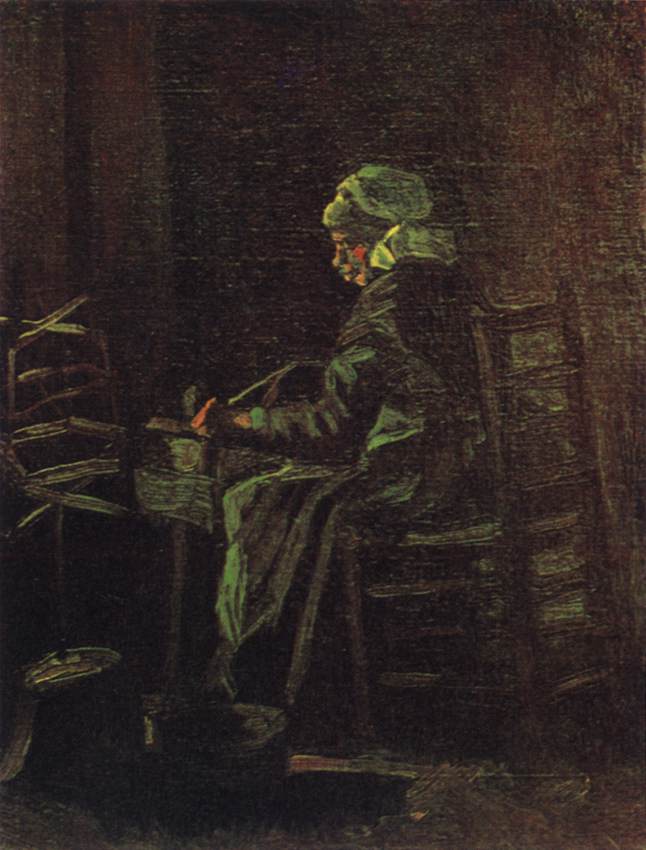Description
The painting "Peasant Woman at the Spinning Wheel" by Vincent Van Gogh is a masterpiece of Impressionist art that captures the essence of 19th century rural life. The work is characterized by its vibrant and expressive artistic style, which reflects the emotional intensity of the artist.
The composition of the painting is impressive, with the peasant woman seated in the center of the work, surrounded by a series of everyday objects that surround her. Van Gogh uses the puntoillisme technique to create a vibrant and expressive texture that evokes a sense of movement and energy.
Color is a prominent aspect of the work, with a palette of bright, warm tones that reflect the sunlight streaming through the window. Yellow, red and orange tones are combined with blue and green to create a sense of harmony and balance in the work.
The history of the painting is interesting, as it was created during one of Van Gogh's most productive periods in Arles, France. During his stay in this city, the artist was inspired by rural life and created a series of masterpieces that reflect the beauty and simplicity of peasant life.
A little known aspect of the painting is that Van Gogh created it as part of a series of works depicting peasant life. The series includes other famous works such as "The Potato Eaters" and "The Sower", which reflect the hard and challenging life of peasants in the 19th century.
In short, "Peasant Woman at the Spinning Wheel" is a masterpiece of Impressionist art that reflects the emotional intensity and beauty of rural life. With its vibrant artistic style, impressive composition, brilliant color, and rich history, this painting remains one of Van Gogh's most outstanding works.

